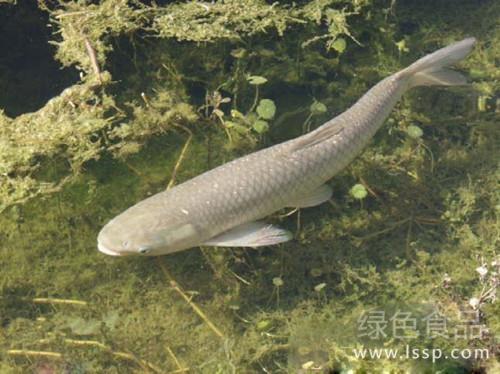What should be caught by fish species management in autumn?
Clear the pond. Transfer the fish to a pond that has been cleaned and sterilized for cultivation. If there are difficulties in the turnover of water sources and fishing ponds, all the fish species can be transferred out of temporary culture, then disinfect the original ponds with 75 kg ~ 100 kg quicklime per mu, and fertilize the water quality according to the conventional method, and return the fish species after the medicine disappears.
Separate cultivation. Adjust the fish species according to different specifications, so that the specifications of the fish species in the same pond are the same. Large fish species have large food intake and strong grabbing power, just like small fish species in ponds, small fish will suffer from physical decline because they do not get enough feed. Fish species of more than 16 cm can be put into adult fish ponds, and small fish species need to be cultivated in special ponds.
Sparse. In autumn, fish species should be released reasonably according to the size and depth of water surface, so as to promote the growth of fish species and improve the survival rate of overwintering. In a pond with a general water depth of 1.5m, there are 4000 ~ 6000 fish species per mu, and the body length can reach 13cm ~ 17cm by the end of the year.
Bait. In autumn, the air temperature is stable, the water temperature changes little day and night, the food intake of fish species is large, and the growth is rapid, so the feed supply must be ensured. The fry ponds mainly composed of herbivorous carp and silver carp and bighead carp should be fed with green fodder and concentrate properly, and duckweed should be fed 1.5 kg ~ 2.5 kg per ten thousand grass carp every day. First put in green feed, then concentrate feed to prevent grass carp from competing with other fish for food. Bait should be guaranteed, quantified, timed and positioned. The fish ponds for mixed culture of silver carp and bighead carp should be fertilized regularly, once every 10 ~ 15 days, 70 kg ~ 90 kg of fermented human and animal manure per mu, and the transparency of pond water should be kept at 30 cm ~ 35 cm. The fry ponds mainly composed of silver carp and bighead carp and grass carp should be fertilized mainly and supplemented by baiting. in addition to basal fertilizer, topdressing should be applied every 5 ~ 10 days, and 80 kg ~ 100 kg of mature human and animal manure should be applied per mu. At the same time, 2 kg ~ 4 kg concentrate was fed per 10 000 fish species every day, and 60 kg ~ 90 kg green feed was given to every 10 000 grass carp before concentrate feed.
Patrol the pool. During the breeding period, we should patrol the pond every day, observe the food intake and living conditions of the fish, and change the new water once a week. To often clean the food farm, timely removal of the residue bait, every half a month around the food farm with 0.5 kg of bleach sprinkled with water disinfection. Bait should be given regularly, preferably twice a month for 3 consecutive days.
- Prev

Technical points of mixed culture of snails in grass carp field with abundant and pollution-free grass carp
Technical points of mixed culture of snails in grass carp field with abundant and pollution-free grass carp
- Next

Cutlass bidermis
[Characteristics] Fish shape complete, food without thorns. [Ingredients] Knife fish, cooked pork fat, cooked ham slices, cooked ham powder, spring bamboo shoots, water mushroom, egg white, coriander powder, Shaoxing wine, refined salt, monosodium glutamate, onion knot, ginger slices, chicken clear soup, water starch, cooked lard. [Preparation process] Scratch the scales, remove the gills and fins of the swordfish, cut a knife horizontally outside the anus, insert bamboo chopsticks into the belly of the fish from the gills, wring off the internal organs, cut off the tip of the fish tail and wash, cut open the back of the fish one by one along both sides of the spine, remove the spine and skin.
Related
- On the eggshell is a badge full of pride. British Poultry Egg Market and Consumer observation
- British study: 72% of Britons are willing to buy native eggs raised by insects
- Guidelines for friendly egg production revised the increase of space in chicken sheds can not be forced to change feathers and lay eggs.
- Risk of delay in customs clearance Australia suspends lobster exports to China
- Pig semen-the Vector of virus Transmission (4)
- Pig semen-the Vector of virus Transmission (3)
- Five common causes of difficult control of classical swine fever in clinic and their countermeasures
- Foot-and-mouth disease is the most effective way to prevent it!
- PED is the number one killer of piglets and has to be guarded against in autumn and winter.
- What is "yellow fat pig"? Have you ever heard the pig collector talk about "yellow fat pig"?

